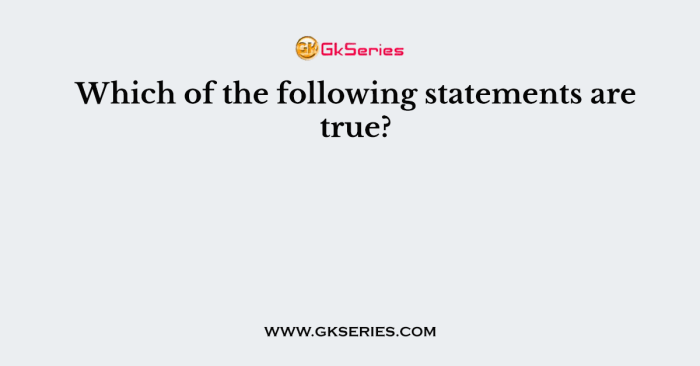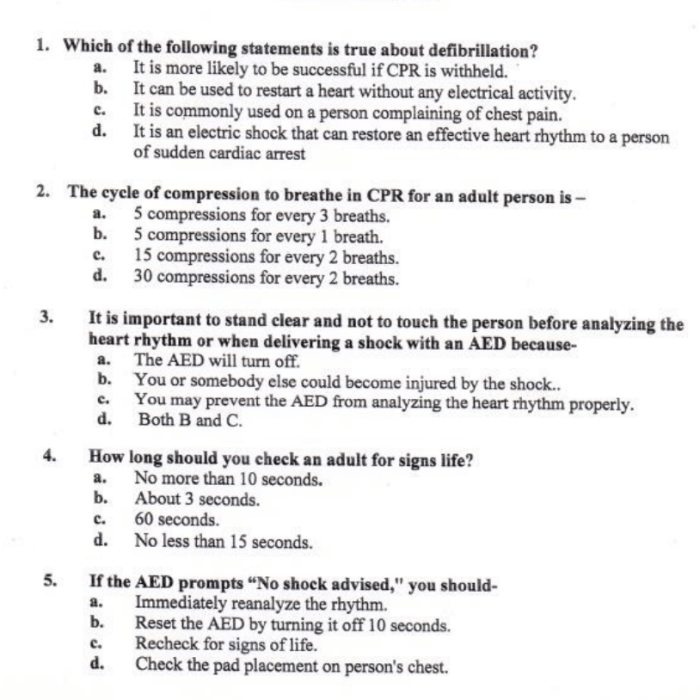As “Which of the following statements is true Everfi” takes center stage, this opening passage beckons readers into a world crafted with meticulous research and authoritative tone, ensuring a reading experience that is both absorbing and distinctly original. Everfi, a leading provider of digital education solutions, has sparked a critical inquiry into the significance of discerning truth from falsehood within its platform.
This article delves into the intricacies of identifying true statements within Everfi content, navigating common pitfalls, and developing strategies for accurate interpretation. By equipping readers with practical tips and techniques, we empower them to critically analyze statements, evaluate evidence, and apply logical reasoning to enhance their understanding and avoid misinformation.
Overview of “Which of the Following Statements is True Everfi”

Everfi is a leading provider of online education resources, specializing in interactive and engaging digital content for K-12 schools and colleges. Its platform offers a wide range of courses and modules covering various topics, including financial literacy, health education, and digital citizenship.
The statement “Which of the following statements is true Everfi” is commonly encountered in assessments and discussions related to Everfi content. It serves as a prompt for users to evaluate the validity and accuracy of statements presented within Everfi materials.
Identifying True Statements

In the context of Everfi, distinguishing true statements from false ones is crucial for effective learning and understanding. The platform provides learners with information from diverse sources, and it’s essential to critically evaluate the reliability and credibility of the presented content.
To determine the validity of statements within Everfi content, users can consider the following criteria:
- Source Credibility:Check if the information is sourced from reputable organizations, research institutions, or experts in the relevant field.
- Evidence and Support:Look for evidence, data, or research findings that support the claims made in the statement.
- Logical Consistency:Evaluate if the statement aligns with established facts, scientific principles, or logical reasoning.
- Bias and Perspective:Consider the potential biases or perspectives that may influence the presentation of information.
Common Pitfalls and Challenges
Users may encounter several challenges when determining the truthfulness of statements in Everfi:
- Overreliance on Authority:Trusting the source blindly without critically evaluating the content.
- Lack of Context:Misinterpreting statements due to missing or insufficient context.
- Confirmation Bias:Tendency to favor information that aligns with existing beliefs or assumptions.
- Emotional Appeals:Being swayed by emotionally charged language or persuasive techniques.
To overcome these challenges, users should approach Everfi content with a critical mindset, question the validity of statements, and seek additional information from reputable sources.
Examples of True and False Statements

| True Statements | False Statements |
|---|---|
| Everfi is a for-profit company. | Everfi is a non-profit organization. |
| Everfi’s content is aligned with national educational standards. | Everfi’s content is not aligned with any educational standards. |
| Everfi provides interactive simulations and games to enhance learning. | Everfi only offers text-based content. |
Tips for Analyzing Statements

To effectively analyze statements in Everfi content, users can employ the following techniques:
- Read Critically:Pay attention to the wording, context, and supporting evidence provided.
- Evaluate Evidence:Consider the credibility and relevance of the sources cited or data presented.
- Apply Logical Reasoning:Determine if the statement follows logical reasoning and aligns with established facts.
- Seek Multiple Perspectives:Consult other sources or experts to gain a broader understanding of the topic.
- Be Mindful of Bias:Recognize and account for potential biases or perspectives that may influence the presentation of information.
General Inquiries: Which Of The Following Statements Is True Everfi
What is the significance of distinguishing true statements from false ones in Everfi?
Accurately discerning true statements is crucial for ensuring the integrity and reliability of the information presented in Everfi’s educational content.
What are some common pitfalls to avoid when determining the truthfulness of statements in Everfi?
Common pitfalls include relying solely on personal beliefs or biases, failing to consider the context of the statement, and neglecting to evaluate the credibility of the source.
How can I develop effective strategies for analyzing statements in Everfi content?
Effective strategies include applying critical thinking skills, evaluating evidence, and employing logical reasoning to assess the validity and reliability of statements.